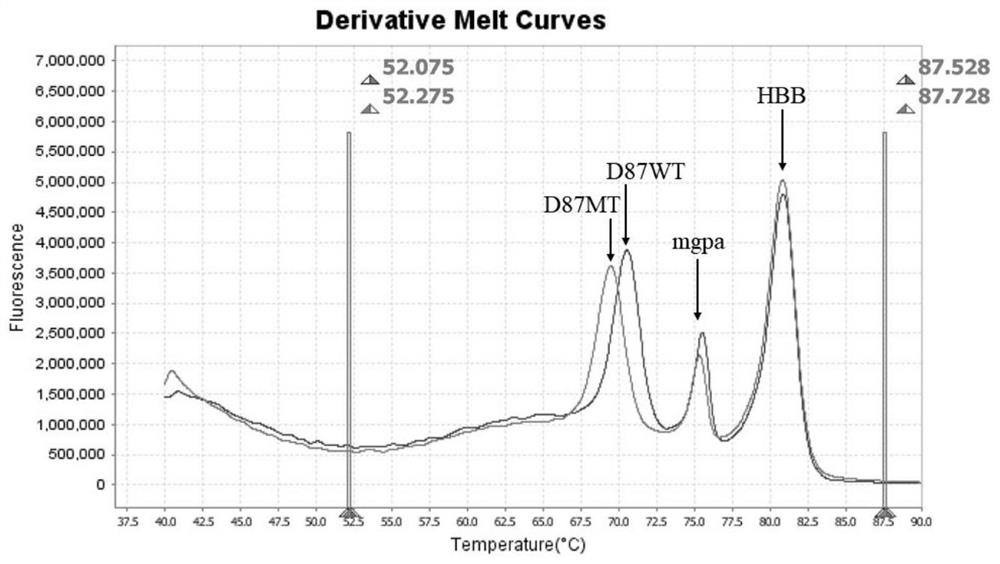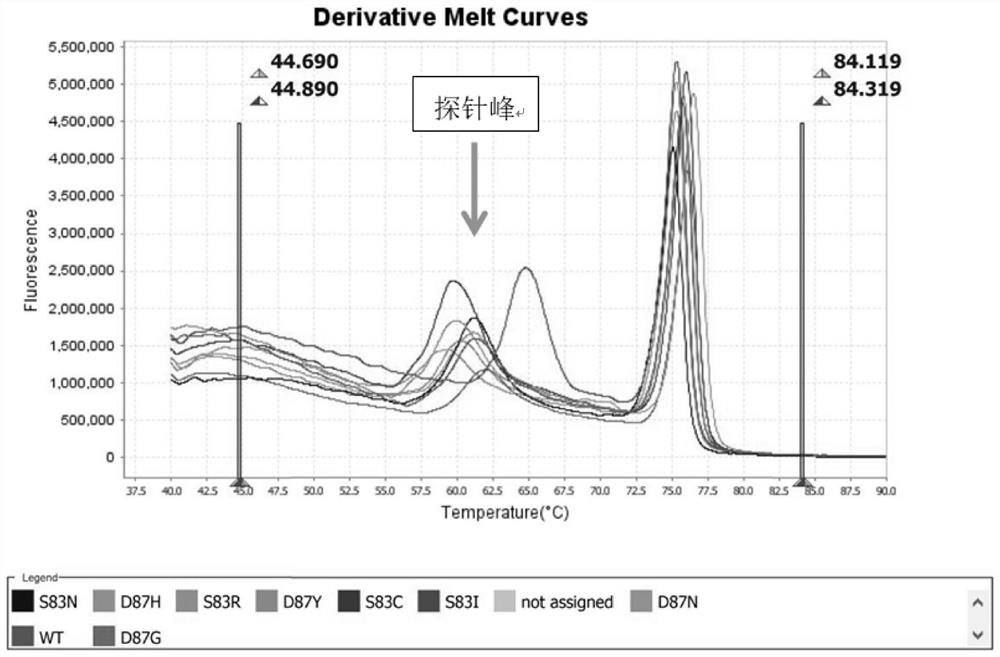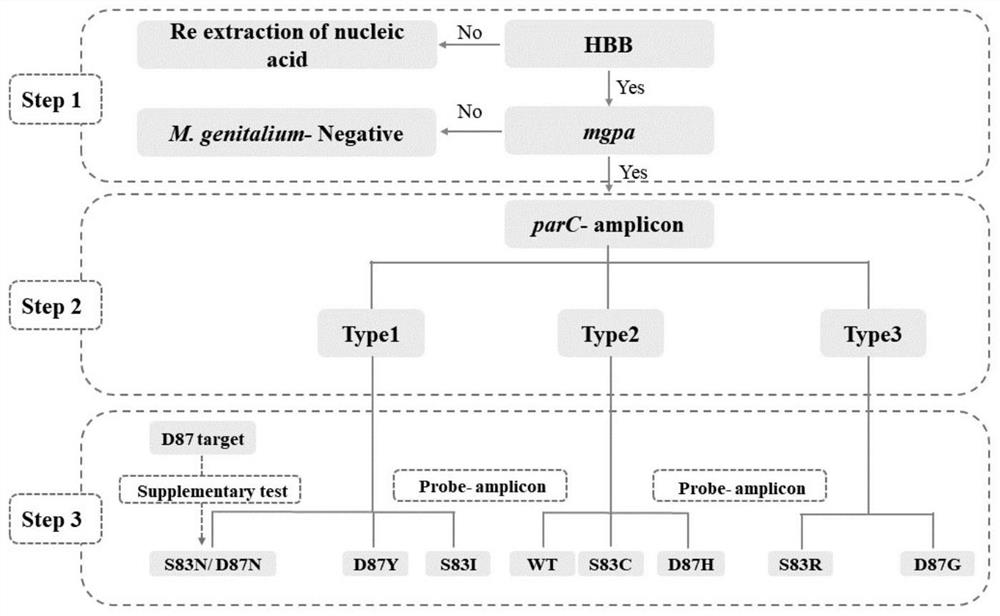Mycoplasma genitalium parC gene mutation type detection method and kit
A technology of mycoplasma genitalium and detection kits, which is applied in the field of molecular biology detection, can solve the problems of complex mutations, inability to cover mutant types, and increase costs, and achieve the effects of strong specificity, reduced detection costs, and low cost
- Summary
- Abstract
- Description
- Claims
- Application Information
AI Technical Summary
Problems solved by technology
Method used
Image
Examples
Embodiment 1
[0037] 1) Use the sample collection tube provided with the kit to collect patient secretions or urine samples.
[0038] 2) For urine samples, centrifuge at 8,000 rpm for 10 minutes, discard the supernatant, and add an appropriate amount of Lysis buffer to the sample collection tube; for swab samples of secretions, add an appropriate amount of Lysis buffer to the sample collection tube, Stir and soak the swab in Lysis buffer for 5 min.
[0039] 3) The sample collection tube is placed in a metal bath or a water bath, heated at 95° C. for 10 minutes, and allowed to stand at room temperature to complete the extraction of the sample genomic DNA. (The above steps can be used to complete the extraction of genomic DNA with other nucleic acid extraction kits or methods)
[0040] 4) Using the sample genomic DNA obtained in the above steps as a template, 8 mutation types of the parC gene of Mycoplasma genitalium were detected in the primer sets of the two Assays. The 20 μl reaction sys...
PUM
 Login to View More
Login to View More Abstract
Description
Claims
Application Information
 Login to View More
Login to View More - R&D
- Intellectual Property
- Life Sciences
- Materials
- Tech Scout
- Unparalleled Data Quality
- Higher Quality Content
- 60% Fewer Hallucinations
Browse by: Latest US Patents, China's latest patents, Technical Efficacy Thesaurus, Application Domain, Technology Topic, Popular Technical Reports.
© 2025 PatSnap. All rights reserved.Legal|Privacy policy|Modern Slavery Act Transparency Statement|Sitemap|About US| Contact US: help@patsnap.com



